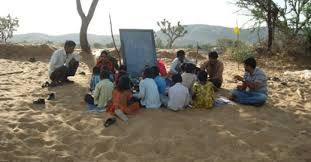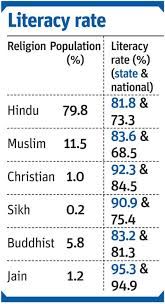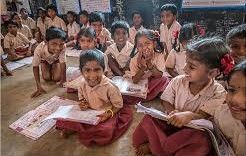‘Living Illiterate, Dying Early’
May 13, 2019 • 13 views
Literacy is defined as the ability to read and write. It is an evolving concept which not only entails the grasping abilities of printed text but also the abilities to adapt visual entities and technological awareness as well. It happens to be a multi-dimensional concept which keeps on adding new parameters to it with respect to the developments that are taking place in a globalised world.
“Illiteracy does not impede the practice of democracy, anti-intellectualism does.”
A higher literacy rate is an essential requirement for any nation to bring it at par on a global platform with other nations. No nation looks a promising nation if it has a stable economic growth rate but poor literacy rates. Education after all is a fundamental right which is ensured to the citizens. Also, it needs to be highlighted that India is a country where the extent of disparities is such that one nation has achieved a literacy rate higher than 90 percent while on the other hand, there also exist nations where the literacy rates are still dismal i.e. Jharkhand, Arunachal Pradesh and Bihar.

According to a report by the United Nations Educational, Scientific and Cultural Organization (UNESCO), India has the highest population of illiterate adults at 287 million. The statistics point towards the staggering disparities in the educational levels in the country. The illiteracy levels from the year 1991 to 2006 have risen to a whopping 63 percent.
While India is still struggling to eradicate illiteracy, it is heartening to note that our literacy rate has gone up from 25 per cent in 1951 to 64.8 per cent in 2001. It is true that this percentage includes everyone who knows how to read and write a few alphabets, and may not be considered a true indicator of education; however, the rise in the percentage is quite noticeable.
Reason for the illitracy
One of the primary reasons for dismal literacy rates is inadequate school facilities. The teaching staff that is employed across the government-run schools is inefficient and unqualified. Another reason which leads to the maximum dropouts among the children is the lack of proper sanitation. A study has stated that 59 percent of the schools do not have drinking water facilities. There is a shortage of teachers as well.

High Dropout Rate
Students tend to leave the school when they fail the examination. This is one of the main reasons behind the illiteracy in India. This is usually seen in the rural areas of India.
Gender Bias
In India, female are discriminated in terms of education. They are not sent to school just because they are female.
Social Problems
Social problems like caste discrimination, child marriage, child labour, untouchibility are strong causes of a large percentage of Indian children being denied even basic primary school education.
Poverty
Lack of education makes people unqualified for any job opportunity. When they are not able the get the job and earn money, the living becomes very difficult for them.

Higher Crime Rates
Lack of education hinders the social awareness of any individual. They are not able to differentiate between good and bad and tend to the crime world. Also, illiteracy makes the earning money very difficult, hence people find unethical and wrong ways to earn money.
A series of RTIs filed by journalist Siddheshwar Shukla has revealed that during the past three years, the majority of mid-day meals being served to the 11.5 lakh children in Delhi have failed tests conducted by the government.
Efforts to Improve Literacy Level
The Supreme Court in a ruling in 1993 said that children had a fundamental right to free education and thus in the year 2003 the “Right to Education was incorporated in the Constitution under the Constitution (83rd Amendment), 2000”.
Despite this, the country couldn’t provide free and compulsory education of children up to fourteen years of age within ten years of the bill coming into effect under Article 45 of the Constitution.
The Sarva Siksha Abhiyan was launched in 2001 to ensure that all children in the 6–14-years of age-group attend school and complete eight years of schooling by 2010. An important component of the scheme is the Education Guarantee Scheme and Alternative and Innovative Education, meant primarily for children in areas with no formal school within a one kilometer radius.
The classrooms, teachers, libraries and laboratory facilities, hostels, and playfields needed for the rising number of student clientele will have to be provided. Already we know that the existing system is unable to meet the rising demand.
As a consequence, many surrogate institutions have sprung up outside of the education system to train aspiring students. Coaching centre’s, tuition classes, ‘institutes’ and ‘universities’ have been set up in the private sector, not all of which are of acceptable standards. Such institutions have commercialized education and put it beyond the reach of the poor and the deprived.

A major aspect that is slowly ruining the state of education is the commercialization of education both at the elementary and at the higher education levels. Private schools charge enormous fees which makes it difficult for the poor parents to send their children to the schools.
Not only the government, but every literate person needs to accept the eradication of illiteracy as a personal goal. Each and every contribution by a literate person can make a contribution to eradicate the menace.
As in the words of Barack Obama, “Change will not come if we wait for some other person or some other time. We are the ones we’ve been waiting for. We are the change that we seek.”
